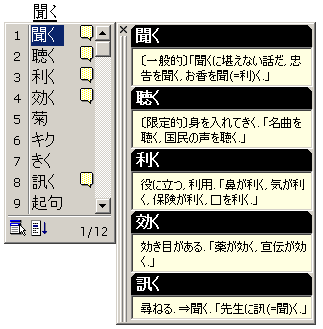Hi, it’s me again with (hopefully) another great post breaking down the intricacies of the hardest language on the planet (pats myself on back). This time we are going to take a deeper look at a word that probably every hard-core anime fan is already familiar with: 「本当」.
本当?!That’s 超 Awesome!! ← (Don’t ever talk like this)
Calm down. This is not a Japanese anime lesson like, for instance “Reiko-chan’s site“, a site so cool it makes me want to cry. Instead, I’m going to look at how the individuals characters 「本」 and 「当」 are used in ways you may not be aware of. You’ll see that these characters are used quite often in Japanese that is slightly more mature than Sailor Moon.
It’s the real stuff
「本」 is so useful that it’s probably one of the first characters everybody learns. You probably already know that it means, “book” by itself and is also part of the word for “Japan” (日本). You may even know that it’s a counter for bottles, something you’ll need to know if you’re a drunkard salaryman like me.
But did you know that 「本」 also means, “the real thing”? In fact, the word 「本物」 means exactly that as it uses 「本」 with 「物」, the character for object. Other examples include words such as: 本日、本人、本来、本場、本番、本音、本格的、本気、本名. The 「本」 in all these words act like a prefix indicating that it’s the genuine thing.
Let’s take a closer look at 「本日」 and 「本人」 and the role 「本」 plays in each word.
本日
「本日」(ほんじつ) essentially means “today”, but why have another word for “today” when you already have 「今日」? The only difference, as you can see, is the use of 「本」 instead of 「今」. In other words, as opposed to the present day, 「本日」 means, “the real day” (the only “real day” being the current one).
1)今日来てくれてありがとう。
– Thanks for coming today.2)本日は、ご来場ありがとうございました。
– I would like to thank everybody for coming today.
The only real, practical difference between 「今日」 and 「本日」 is that 「本日」 sounds more official, similar to the difference between saying, “at this point in time” versus saying just “now”. While the practical difference is a bit unrelated, knowing the precise difference between the kanji will help you get a feel for where this difference comes from.
本人
「本人」(ほんにん) is a very useful word mainly because Japanese doesn’t have any pronouns. While you can say 「自分」 for oneself, you don’t have the equivalent for himself or herself. So if you wanted to say, “Talk to the man, himself”, 「本人」 is a handy way to easily refer to the real person in question. Here’s a quick example.
A)田中さんは、いつ結婚するの?
– When is Tanaka-san getting married?B)本人に聞いたらどう?
– How about asking the actual person, himself?
In addition, expect to see this word used often in applications such as for visas or passports that need to describe what the applicant, herself, must do.
パスポートを受け取る時には、本人が必ず窓口においで下さい。
– When getting the passport, the applicant, herself, must come to the window.
This meaning of “genuine” is related to the original meaning of “root” (hence the tree character (木) with a line across the bottom of the tree). Also derived from the same meaning, 「本」 can be used to mean “main”. Examples of this usage include words like: 本体、本館、本社、本州、本文.
It’s the stuff in question
The second character 「当」 is just as useful as 「本」 and almost as common. The character by itself describes when something hits its target. For instance, the verb 「当たる」 is used to describe winning a raffle because you were successfully targeted from the random selection. The 「当」 character is similarly used in a variety of kanji compounds to describe the targeted time or location. This is very useful for talking about the time or location in question by using words such as: 当月、当日、当時、当社、当店、該当. Here’s a simple example.
この切符は発売当日のみ有効です。
-This ticket is only valid on the day of purchase.
In the example above, you could have simply described the day that the ticket was bought by saying something like 「買った日」 but it’s not as concise or as professional-sounding as 「発売当日」.
This type of usage is very useful because no matter what the actual time is, it refers only to the time in question. That means that if it’s understood by the context, you don’t have to go through the pain of describing exactly which time that is. Here’s another example.
当時は、運転免許を持ってなかったので、どこにも行けなかったんですよ。
-At that time, I didn’t have a driver’s license so I couldn’t go anywhere.
Here’s another example using a location instead of time.
当店では名前を隠して販売するような商品は扱っておりません。
-We do not handle products that are sold with hidden names at our stores.
「この店」 would also make sense in this sentence but since there may be more than one store and you’re not specifying a store at a specific location, 「当店」 is used to refer vaguely to the store in question.
Conclusion
We took at look at the kanji making up 「本当」, their real meanings, and how they are used in a variety of words. I hope this will help you easily understand a whole slew of new words that use the same kanji. Getting a true sense of what each individual kanji means in this fashion often gives you important clues and mnemonics for learning new words, which is one of the great benefits of using kanji.

